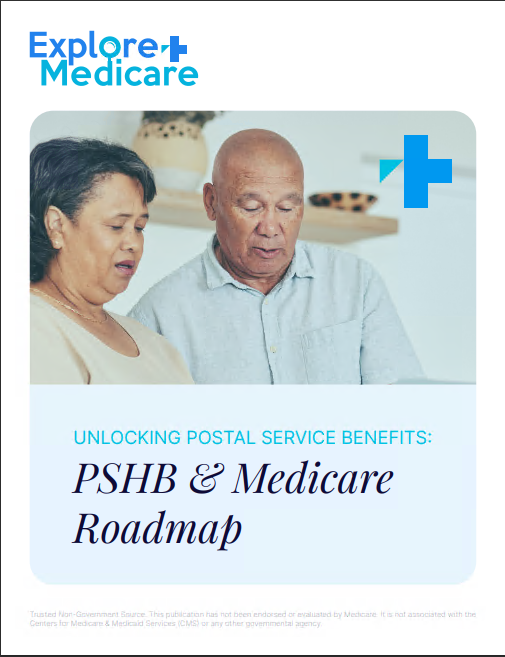Key Takeaways
-
Medicare is easy to enroll in, but understanding your total out-of-pocket costs across Parts A, B, D, and supplemental coverage is far more complex.
-
Even with Medicare, you may still face deductibles, coinsurance, monthly premiums, and prescription drug costs that add up significantly in retirement.
Medicare Is Not Free Just Because You Turn 65
Many people assume that once they qualify for Medicare, their healthcare becomes automatic and inexpensive. That is not true. While some parts of Medicare have no monthly premium for most people, others require ongoing payments, and nearly all parts include out-of-pocket costs.
You become eligible for Medicare at age 65, or earlier if you qualify due to disability. But signing up is only the beginning. To get the right coverage for your medical needs, you must understand how each part of Medicare works and what you will actually be paying throughout the year.
What You Pay for Medicare Part A
Medicare Part A covers inpatient hospital care, skilled nursing facility care, hospice, and some home health services. Most people do not pay a monthly premium for Part A if they or their spouse paid Medicare taxes for at least 40 quarters (10 years).
However, “premium-free” does not mean cost-free:
-
Deductible: In 2025, the Part A deductible is $1,676 per benefit period. This must be paid before Medicare begins covering hospital costs.
-
Coinsurance: After day 60 of a hospital stay, you pay $419 per day; after day 90, you pay $838 per day using your lifetime reserve days.
-
Skilled nursing facility care: Days 21 through 100 cost $209.50 per day after a three-day hospital stay.
These charges can repeat if you are admitted to the hospital again after 60 days.
Monthly Premiums and Deductible Costs of Part B
Medicare Part B covers doctor visits, outpatient services, preventive care, durable medical equipment, and more. Unlike Part A, almost everyone pays a monthly premium for Part B.
In 2025:
-
Monthly premium: $185 for most enrollees
-
Annual deductible: $257
-
Coinsurance: You pay 20% of the Medicare-approved amount for most services after you meet the deductible
If your income is above a certain threshold, you may pay more due to the Income-Related Monthly Adjustment Amount (IRMAA).
This 20% coinsurance applies to services like outpatient surgery, diagnostic tests, and specialist visits. There is no annual out-of-pocket cap for Part B unless you have additional coverage.
How Prescription Drug Costs Add Up With Part D
Prescription drug coverage under Medicare Part D is offered through private plans approved by Medicare. Each plan has its own formulary and cost structure, but there are standard maximums set by the government.
For 2025:
-
Deductible limit: $590
-
Out-of-pocket maximum: $2,000 (new cap introduced in 2025)
Once you reach the $2,000 limit in total out-of-pocket drug spending, your plan covers all covered medications for the rest of the year. However, not all drugs are covered equally, and formulary restrictions can result in higher costs or denial of certain medications.
You may also face:
-
Tiered copays: Higher costs for brand-name or specialty drugs
-
Pharmacy network restrictions: Lower costs at preferred pharmacies
-
Coverage restrictions: Such as prior authorization, step therapy, or quantity limits
What About Supplemental Coverage?
Medicare does not cover everything. Many people choose to add supplemental insurance to help cover deductibles, coinsurance, and other gaps. These options come with their own monthly premiums and rules.
You can choose from:
-
Medigap (Medicare Supplement): Helps cover some or all out-of-pocket costs in Original Medicare
-
Employer or retiree health plans: If available, these may coordinate with Medicare
These plans do not usually include drug coverage, so you may still need a separate Part D plan. You also must pay the monthly premium for both your Part B and your Medigap policy.
The Costs You Might Not Be Expecting
While most people prepare for Medicare premiums and deductibles, there are additional expenses that can be overlooked:
-
Dental, vision, and hearing services: Not covered under Original Medicare
-
Long-term care: Custodial care in a nursing home is not covered
-
Foreign travel emergencies: Rarely covered, unless you purchase a plan that includes this
-
Late enrollment penalties: If you miss your initial enrollment window, you could pay higher premiums permanently
These gaps can lead to unexpected bills, especially for those who assumed Medicare was comprehensive.
The Impact of Income on Your Costs
Your modified adjusted gross income (MAGI) from two years ago determines whether you pay IRMAA. This applies to both Part B and Part D.
In 2025, if your income exceeds $106,000 (individual) or $212,000 (joint), you’ll pay higher premiums. These adjustments are automatically calculated and deducted from your Social Security benefits or billed directly.
Higher-income retirees should be prepared for:
-
Part B premiums significantly above $185
-
Part D monthly surcharges added to your prescription plan
This system can feel confusing and punitive, especially for retirees with fluctuating income or one-time capital gains from retirement account withdrawals or property sales.
Telehealth, Mental Health, and Home Health Services
Medicare now covers a broader range of services, including:
-
Telehealth visits: Covered under Part B for many specialties
-
Mental health services: Part B covers outpatient therapy, psychiatric evaluations, and new coverage in 2025 includes marriage and family therapists and mental health counselors
-
Home health services: Covered if deemed medically necessary
However, all these services may still be subject to deductibles and the 20% Part B coinsurance. That adds up fast, especially for ongoing care.
Annual Enrollment and Coverage Review Is Critical
Each year, from October 15 to December 7, you can make changes to your Medicare coverage. This is your opportunity to:
-
Change Part D plans based on new drug needs
-
Switch between Original Medicare and a Medicare Advantage plan
-
Enroll in or change supplemental coverage if you meet eligibility rules
Failing to review your plan annually can lead to higher-than-necessary costs or coverage gaps.
Plan formularies, provider networks, and cost-sharing rules can change every year. What was a good plan in 2024 may not be optimal in 2025.
Medicare Advantage Plans: Simpler or More Complicated?
Medicare Advantage (Part C) plans bundle Parts A and B and often include drug coverage and other benefits like dental or vision. However, they have their own cost structures and limits.
Even though they may seem convenient:
-
You may face prior authorization requirements
-
Out-of-pocket limits vary but can be high
-
Network restrictions may limit your provider choices
You must continue paying your Part B premium even if you enroll in a Medicare Advantage plan.
How to Plan Ahead for Medicare Costs
To avoid surprises and financial strain, you should:
-
Estimate total annual costs, not just premiums
-
Use Medicare’s Plan Finder to compare prescription drug plans
-
Track your income to anticipate IRMAA charges
-
Consider supplemental coverage to cap out-of-pocket expenses
-
Reevaluate coverage every year during the Annual Enrollment Period
Even With Medicare, You Still Need a Budget
Medicare can be a lifesaver in retirement, but it is not free or even low-cost for many people. Without proper planning, you may find that:
-
Premiums, deductibles, and copays eat into your Social Security income
-
Prescription drugs and uncovered services create budget pressure
-
You are underinsured for key services like dental or long-term care
Having a financial plan that includes healthcare costs is crucial. Many retirees underestimate this category entirely.
Make Informed Decisions With Trusted Help
Understanding your Medicare costs means going beyond what’s automatically deducted or advertised. It requires attention to timelines, coverage details, and cost-sharing terms across multiple parts.
If you feel unsure about your options, it’s wise to get professional help. Speak with a licensed agent listed on this website who can walk you through:
-
Your Medicare enrollment timeline
-
Your expected annual costs
-
Your plan options based on your health and financial needs
They can help make your choices clearer and more cost-effective.







